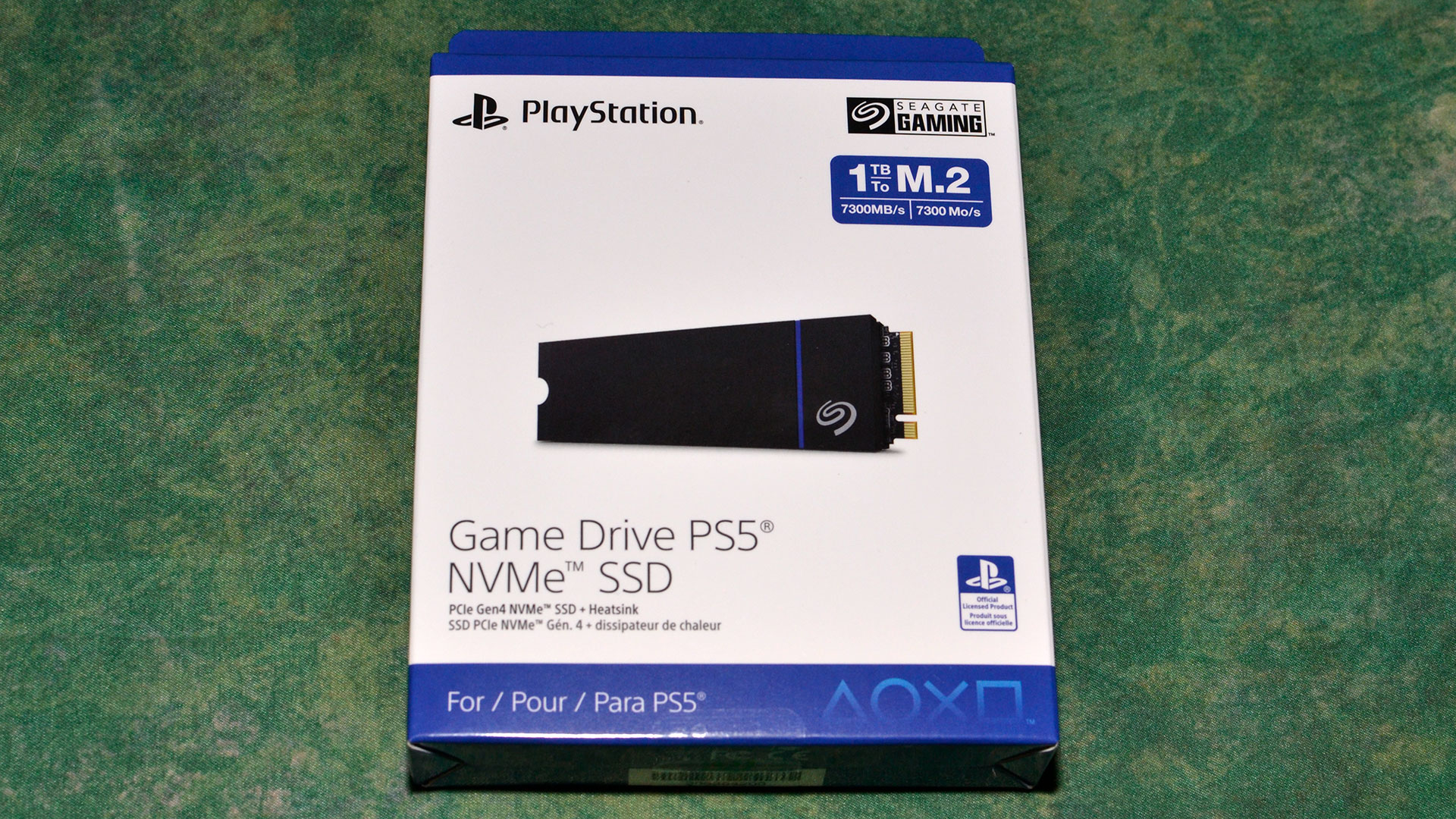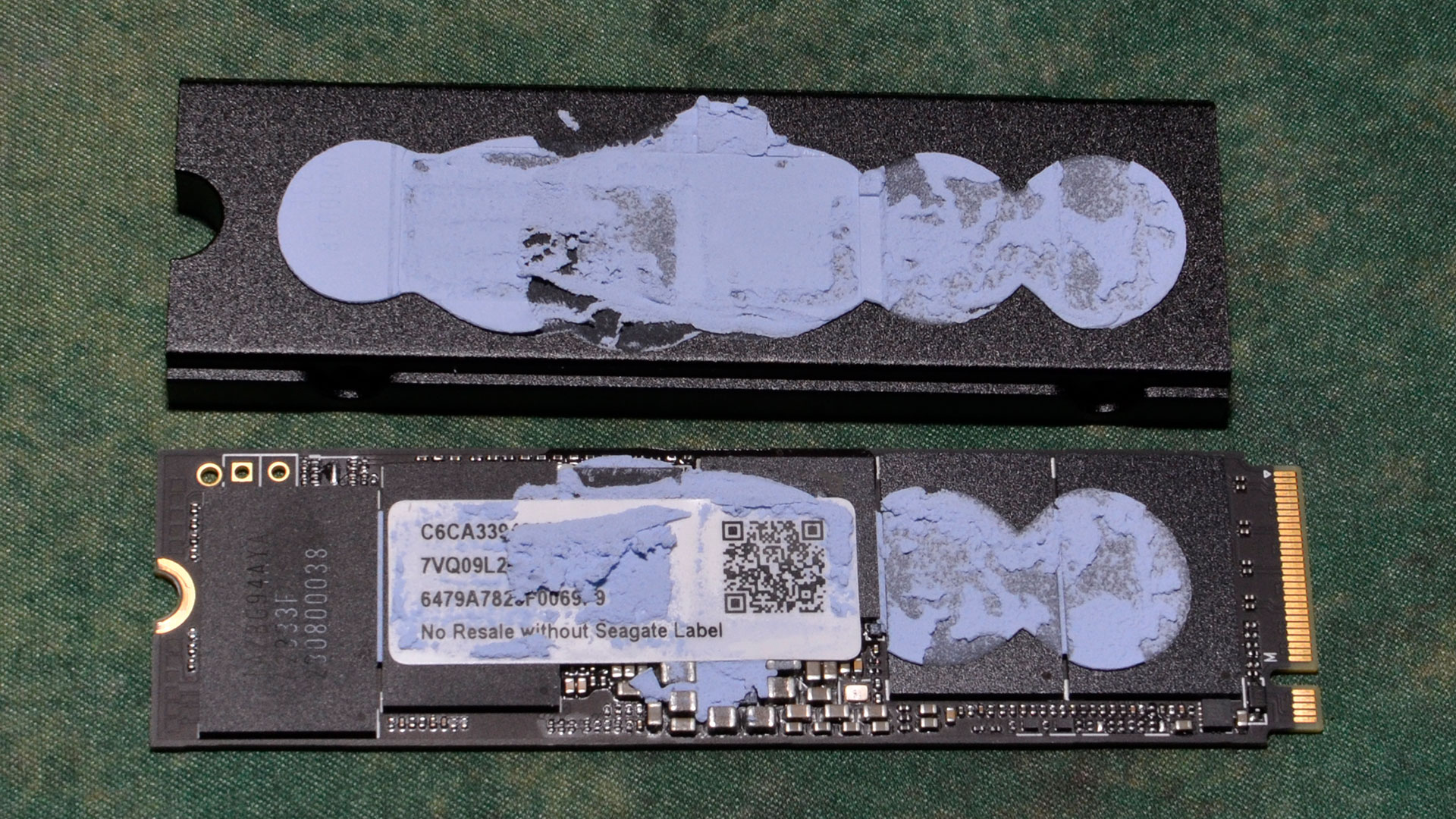Tom's Hardware Verdict
The Seagate Game Drive M.2 SSD for PS5 is a FireCuda 530 with a standard PS5-compliant heatsink, using a reliable and well-performing design without taking any risks. It gets the job done.
Pros
- +
Good sustained performance
- +
5-year, high TBW warranty
- +
Effective heatsink
Cons
- -
Nothing special, even for the PS5
- -
Not substantially different from the FireCuda 530 with heatsink
Why you can trust Tom's Hardware
You can never have enough space for games, and if you’re a console fan you just want something that works. A fast drive with a good warranty and a sleek look, not to mention with space up to 4TB, is an easy pull off the shelf. Seagate has no problem in taking a winning formula and marketing it for the PlayStation 5, rebranding its FireCuda 530 with heatsink as the Game Drive M.2 SSD for PS5. It’s not a bad call, as the recognizable brand hits all the right marks for an expansion drive.
The Game Drive’s standout feature, beyond the fact it comes with a PS5-compliant heatsink, is its high write endurance. While this usually doesn’t mean much in practice, it does help underline Seagate’s dedication to reliability. Our newer review of the Gen 5 FireCuda 540 covers this in detail, pointing out Seagate’s data recovery service and thorough user guide. However, you probably won’t lose sleep over a failed PS5 game drive, so the Game Drive is instead targeted at giving you a good baseline experience.
There’s a lot of competition in this space, so if you’re not sold on the heatsink or warranty, you’re probably looking at price. Performance differences from one drive to the next in the PS5 is minimal, although you may repurpose this drive for desktop use at some point.
At the time of review, the 2TB Game Drive was the best bet of the capacities available, and we can safely recommend the drive. In a pinch, it could be used for heavier workloads as it has good sustained performance, as we saw with the FireCuda 530, but there are other options available for that. The Game Drive is made to be an easy and reliable drop-in expansion SSD for the PS5, first and foremost, and at that, it succeeds.
Specifications
| Product | 1TB | 2TB | 4TB |
|---|---|---|---|
| Pricing | $94.99 | N/A (Previous: $139.99) | $389.99 |
| Form Factor | M.2 2280 | M.2 2280 | M.2 2280 |
| Interface / Protocol | PCIe 4.0 x4 / NVMe 1.4 | PCIe 4.0 x4 / NVMe 1.4 | PCIe 4.0 x4 / NVMe 1.4 |
| Controller | Phison E18 | Phison E18 | Phison E18 |
| DRAM | DDR4 | DDR4 | DDR4 |
| Flash Memory | 176-Layer Micron TLC | 176-Layer Micron TLC | 176-Layer Micron TLC |
| Sequential Read | 7,300 MB/s | 7,300 MB/s | 7,250 MB/s |
| Sequential Write | 6,000 MB/s | 6,900 MB/s | 6,900 MB/s |
| Random Read | 800K | 1000K | 1000K |
| Random Write | 1000K | 1000K | 1000K |
| Security | N/A | N/A | N/A |
| Endurance (TBW) | 1,275TB | 2,550TB | 5,100TB |
| Part Number | ZP1000GP304001 | ZP2000GP304001 | ZP4000GP304001 |
| Warranty | 5-Year | 5-Year | 5-Year |
The Seagate Game Drive M.2 SSD for PS5, or Game Drive, is available at 1TB, 2TB, and 4TB capacities. Current pricing has these available at $94.99, $139.99, and $389.99, respectively. We think the 2TB is the best deal of the bunch and is probably the right capacity point to shoot for, anyway. That is also the capacity for peak specified performance, but it’s plenty fast at 1TB. This drive can reach up to 7,300 MB/s / 6,900 MB/s for sequential reads and writes and up to 1000K / 1000K random read and write IOPS. Seagate backs the drive with a 5-year warranty with generous TBW.
Officially, the drive supports 1,275TB of writes per TB capacity. This matches Seagate’s FireCuda 530 and Lightsaber Firecuda, not surprising given they all have the same hardware. Some other drives with this controller and flash also have high TBW ratings, reminding us of older E12- and E16-based drives like the FireCuda 510 and 520 that stood out with high endurance. The numbers on the Game Drive come out to 0.70 drive writes a day, higher than the 0.33 standard for TLC and 0.22 for improved QLC, the latter for the HP FX700. This is far higher write endurance than you rightly need, especially for a PS5 drive, but it’s worth pointing out nonetheless.
Software and Accessories
Seagate has several applications available for download on its website, but the Game Drive probably doesn’t need any of them if it’s resting in your PS5. Still, Seagate offers a Paragon Driver for cross-macOS/Windows storage support, DiscWizard for imaging, SeaTools for a variety of functions, and a Toolkit for backups. While the FireCuda 530 and Lightsaber FireCuda mention Seagate’s 3-year data recovery service, the Game Drive appears to lack this support, which makes some sense for a drive that shouldn’t be hosting any critical data.
Get Tom's Hardware's best news and in-depth reviews, straight to your inbox.
A Closer Look



The Game Drive uses the same heatsink available as an option on the FireCuda 530, although with a blue stripe rather than orange. This heatsink has proven to be effective in keeping the drive from throttling. It fits into the PlayStation 5 and is worth using for peace of mind. The rear side has a label with drive specifications, including power draw. 3.3V at 2.4A is around 8W, although the 4TB is rated for 8.6W average by its datasheet. This matches the 530 and Lightsaber, and all three drives have the same root firmware, so we have a good idea about how well it will perform.


We wanted to verify that the heatsink makes good contact with the drive’s components, especially the controller. The thermal interface is sufficient but not great. Under the label we see the typical Micron 176-Layer TLC flash, which has proven to be incredibly popular, with few downsides. Newer, 232-Layer TLC is most common on Gen 5 SSDs, but it has demonstrated good characteristics on the Crucial T500 and Micron 3500. When it comes to a gaming Gen 4 drive, though, 176-Layer is more than good enough.
We recognize the Phison E18 controller and the much-coveted DRAM cache. In this case, the Game Drive is using SK hynix’s H5AN8G6NDJR-XNC DDR4. 8G6 helps denote it to be 8Gb, or 1GB, of DRAM in a 16-bit configuration. DRAM isn’t strictly necessary for a gaming drive, though. As for the controller, it has been supplanted in some respects by the E25 on the T500 and 3500 SSDs. The T500 has already become a popular drive, in part because of its power efficiency. Some of this improvement is from the flash, some from LPDDR4 over DDR4, and much from the controller.
The E25 only has two primary cores to the E18’s three, and these also run at a lower clock speed. The design is closer to the E12 and E16, although these older controllers are in the 28nm process node. Single-core designs like the E21T and E27T have higher clock rates to compensate for the lack of extra cores and they also do away with DRAM. The E25 can also get away with lower clock speeds than the E18 because it’s a four-channel design. This makes for a more efficient drive, although the difference is minor in a power-conscious gaming environment.
This is precisely why we previously compared the 3500 to the Kioxia Exceria drives. The latter can use the E12C which is a four-channel cut-down version of the eight-channel E12 controller. If we look at the E12C’s clock rates and dual primary core configuration we see something very similar to the E25, with the latter being at 12nm but with a much higher bus rate. This helps make the T500 a very appealing drive for the PS5, but it currently lacks the 4TB option of the Game Drivem, and it doesn’t quite reach the efficiency levels of what’s possible with DRAM-less drives like the Lexar NM790. Phison’s upcoming E27T should be very efficient, as well.
MORE: Best Hard Drives
MORE: Best SSDs
MORE: How We Test HDDs And SSDs

Shane Downing is a Freelance Reviewer for Tom’s Hardware US, covering consumer storage hardware.
